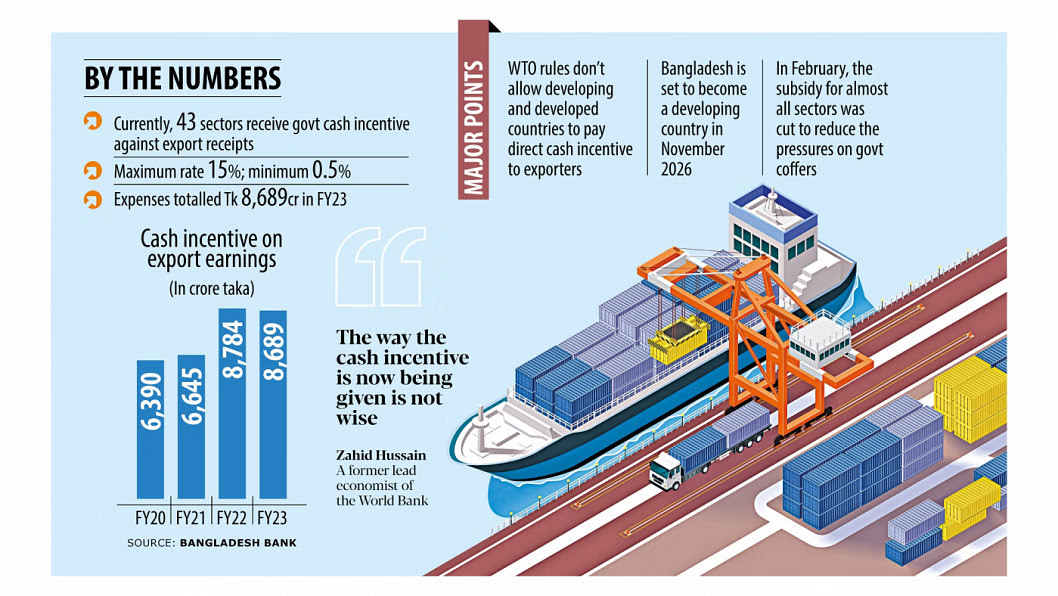Starting off with corrugated cartons in the mid-1980s, the garment accessories sector has now evolved into the manufacture of smart contemporary components like radio frequency identification (RFID) for supply chain tracking and biodegradable packaging.
The backward linkage industry, which supplies 90% of vital accessories needed for exportable apparels, now aspires to grow as a global hub of industrial accessories.
Apart from supplying the $43 billion apparel export market, the accessories and packaging industry has roughly $500 million as direct export to its credit. China’s prospect of gradually moving out of the sector makes the industry people more hopeful of a growth in the future.
While new investment enters the sector, existing companies are going for expansion to focus more on specialised items such as ornamental laces, hooks, specialised laces for branded garment and special lingerie boxes.
Md Moazzem Hossain Moti, president of Bangladesh Garment Accessories Manufacturers and Exporters Association, told The Business Standard that a number of existing companies are now increasing investments for making such items.
A company named RSS Thread and Accessories has already imported necessary machinery for manufacturing specialised components, said its Chairman Md Abdun Noor.
Bangladesh’s garment accessories sector has big potential to grow further as China is not much interested in making such low-cost items. Rather, the country is more focused on sophisticated items, he pointed out.
Dr MA Razzaque, international trade specialist and chairman at Research and Policy Integration for Development (Rapid), also holds the same view.
China will gradually move away from the accessories sector as it is now focusing more on sophisticated sectors. So, Bangladesh can grab the opportunity, he told TBS.
Growing strength
Apart from developing the skill to make RFID, a smart tracking system more improved than a security tag, the accessories industry has got barcode stickers and poly stickers in its product list. Even five years ago, Bangladesh used to import such tech-based accessories from China and other countries.
Over the last three decades, the accessories and packaging industry has evolved into a forex earner mainly in the form of deemed exports. Currently, the sector accounts for around $5 billion out of around $43 billion in apparel exports.
With the local supply capacity now reaching to more than 90%, lead time has improved a lot as garment exporters now can source accessories and packaging locally.
The number of accessories factories now is 1,400. The industry’s investments amount to $7 billion with five lakh people employed, according to Bangladesh Garment Accessories Manufacturers and Exporters Association.
There are at least 30 companies in the sector with an investment of Tk500 crore each, the association said.
The apparel industry has set a target to take its exports to $100 billion by 2030.
This will take the stake of the accessories and packaging sector to $15 billion, say industry people.
Moazzem Hossain feels, “We have the potential to become a hub for the exports of accessories. Bangladesh also has capability to export packaging of other products to different countries, apart from apparels.”
For this, he said they need support from the Export Promotion Bureau for highlighting the country’s competitiveness abroad and a positive attitude of the Customs Department of the National Board of Revenue.
The take-off
With no factory capable of producing accessories, in the mid-1980s, local apparel makers would export items in old and used corrugated cartons, according to sources.
Basically, the cartons of different imported goods were made reusable by customising them manually to carry export-oriented apparel goods.
In 1986, Khan Enterprise, now Khan Accessories & Packaging Company, and a few other companies would remake cartons and supply them to RMG factories. But the supplies were too little to meet the demand at that time.
Later, Panorama Printers, Rupsha Packaging, Habib Box, MAC packaging, Modern Packaging, Saimon Packaging, Kulshi Packaging, Khan Enterprise, Mohammadi Packaging, and Industrial Printing and Packaging entered into remaking of cartons
Shafiullah Chowdhury, owner Kulshi Packaging, told TBS that Panorama Printers and MAC Packaging first started making cartons with semi-auto machines at the beginning of 1988. They also used to export a portion.
Before 1990, the number of accessories makers was 18 and the sector’s export was less than $1 million, he informed.
After 1995, investments in accessories manufacturing kept on growing and new items began to be added besides corrugated cartons. The items included backboard, neck board, collar bone, collar set, sewing thread, elastic, button, zipper, poly bag, plastic hanger, main label, size label, and care label.
Moazzem Hossain Moti said the accessories and packaging industry got a boost with large investments coming in after 2000.
Local companies started making accessories of different styles and designs, such as button, elastic, interlining, motif, pocketing fabric, lining, interlining elastic, cord, ribbon, rivet, and toggle. Such items used to be procured from China, Hong Kong and Korea, he also said.
Four years ago, two multinational companies, Checkpoint Systems Bangladesh Limited and Avery Dennison, and local Adzi Trims Ltd started manufacturing some technology-based items like radio frequency identification devices.
Main raw materials for manufacturing accessories are polypropylene resins, paper, printing ink, chemical, carton paper, and zipper metal.
More than half of the factories that had started with manufacturing of corrugated cartons are no longer in business, failing to make necessary big investments with technological advancement, entrepreneurs say.
Many garment factories also invested in the accessories sector. Mondol Group, one of the leading apparel makers, set up a factory named Montrims Limited. Besides, at least 50 factories, including Envoy Group, Deco Group, KDS, Epyllion, Babylon, Four Group, Sadma Fashion, Onus Group, Designtex Group, and Well Group invested in accessories making.
















